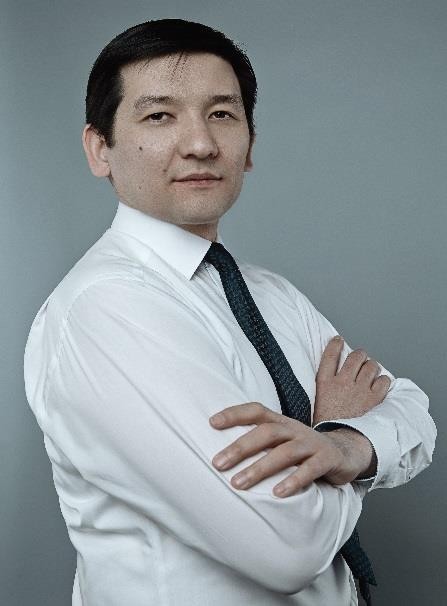December 30, 2020
Civil Construction
- What projects have been implemented and are planned for implementation
- Industry specifics
- What may be the business interest of a potential client
1. What projects have been implemented and are planned for implementation
In general, it should be noted that despite the crisis associated with the pandemic, projects implemented in the construction sector in Kazakhstan (including both residential and other types of construction) tend to grow. So, in the near future, about 160 large projects are planned for implementation.
Among such large projects:-
-expansion of the processing capacities of Aktogay GOK by duplicating the existing KAZ Minerals sulphide plant in the East Kazakhstan region;
– construction of a plant for the production of mineral fertilizers in the amount of at least 1 million tons per year of LLP “Eurochem-Fertilizers” in the Zhambyl region;
– construction of a new processing complex of RG Gold LLP in the Akmola region;
– construction of the Aksu GOK in Akmola region, AK Altynalmas JSC;
– construction of a plant for the production of tires Doublestar in the Karaganda region and others [1].
Among the projects already implemented, it is worth noting a wind farm in the Ereimentau district of Akmola region, the construction of many interchanges in the road construction of Almaty, the Abu Dhabi Plaza tower in Nur-Sultan (almost completed), the infrastructure project Botanical Garden in Nur-Sultan, the construction of a gas pipeline (gasification project Nur-Sultan), etc.
2. Industry specifics
There are many industry specific features in this area. At the same time, the main conceptual feature is considered to be the division of construction types into residential and other types of construction (non-residential buildings), mainly industrial.
The structure of buildings (except for dwellings) includes architectural and construction objects, the purpose of which is to create conditions for work, social and cultural services, storage of material values, etc. Mobile objects of production (workshops, boiler rooms, kitchens, automated telephone exchanges, etc.) and non-production (residential, household, administrative facilities, etc.) belong to buildings. Cars, automobile and tractor trailers, railway specialized and converted wagons, the main purpose of which is to perform production functions (laboratory wagons, clubs, offices, etc.), are considered mobile enterprises of the corresponding purpose and are accounted for as buildings.
Dwellings include capital buildings intended for permanent residence, as well as mobile panel houses, floating houses, other buildings (premises) used for housing, and historical monuments identified mainly as residential buildings.
Industrial facilities, energy facilities, road transport construction, etc., as a rule, built according to individual projects, take into account the peculiarities of technological processes of the industry specificity of the production being created. Basically, they are objects of investment in the public sector of the economy, large and medium-sized businesses and are part of buildings and structures.
Engineering structures include engineering and construction facilities designed to create and perform highly specialized technical functions (mines, oil wells, roads, dams, overpasses, etc.) or to serve the population (urban amenities, etc.). The range of engineering structures includes more than 100 items, and the share of their value in the total volume of construction and installation works is more than 25%.[2]
The main instrument of state regulation of architectural, urban planning and construction activities carried out on the territory of the Republic of Kazakhstan is the legislation on architectural, urban planning and construction activities (the Law on Architectural, Urban Planning and Construction Activities). In addition, there is a state system of normative documents in the field of architecture, urban planning and construction, aimed mainly at technical regulation and standardization of buildings, design, repair, operation, building materials, etc. Some of these activities are subject to licensing.
At the design stage, construction, reconstruction, technical re-equipment, expansion, overhaul and operation of industrial facilities on the territory of special economic zones, as well as included in the republican industrialization map, are under direct application of international building codes and regulations, as well as international, regional standards and standards of foreign states in accordance with the legislation of the Republic of Kazakhstan in the field of standardization. When constructing facilities on the territory of special economic zones, as well as those included in the republican industrialization map, it is allowed to use building materials and structures that meet the requirements of international building codes and regulations, as well as international, regional and foreign standards, in accordance with the legislation of the Republic of Kazakhstan in sphere of standardization[3].
Individuals and legal entities for the implementation of project activities and construction and installation works in the field of architecture, urban planning and construction are divided into the following categories:
I category – carry out design activities and construction and installation work at facilities of all levels of responsibility within the framework of the existing license;
II category – carry out design activities and construction and installation works at facilities of the second and third levels of responsibility, as well as work at facilities of the first level of responsibility within the framework of the existing license under subcontracting agreements;
III category – carry out design activities and construction and installation work at facilities of the second technically simple and third levels of responsibility, as well as work at facilities of the first and second levels of responsibility within the framework of the existing license under subcontracting agreements[4].
The main criterion for the admissibility of obtaining a particular license is the qualification requirements for a potential license recipient. The bodies issuing licenses are local executive bodies that exercise appropriate control in this area.
In most large development projects, within the framework of the established detailed planning project and the master plan, construction and related work is carried out based on design and estimate documentation (DED), which must be approved, comprehensive non-departmental examination and approval.
Without design and estimate documentation, but in agreement with local executive bodies, it is possible to carry out construction work
– individual residential buildings of a certain type,
– erection of temporary structures located on their own personal plots or plots of garden and vegetable garden partnerships, as well as residential and (or) utility premises for seasonal work and distant pasture farming, reconstruction (redevelopment, re-equipment) of residential and non-residential premises in residential buildings (residential buildings ), which does not require the allotment of an additional land plot (cutting off the territory), is not associated with any changes in load-bearing structures, engineering systems and communications, does not deteriorate the architectural, aesthetic, fire-prevention, explosion-proof and sanitary qualities, does not have a harmful effect on the environment during operation ;
– reconstruction (redevelopment, re-equipment) of residential and non-residential premises in residential buildings (residential buildings), which does not require the allotment of an additional land plot (land plot), not associated with any changes in load-bearing structures, engineering systems and communications, and does not impair the architectural and aesthetic, fire-fighting, anti-explosive and sanitary qualities that do not have a harmful effect on the environment during operation;
– changes in other technically not complex buildings intended for the personal use of citizens.
The main participants in relations related to contract work in construction (including design, survey, expert, research work for construction, production of building materials, products and structures by orders), not related to public procurement, are the customer-investor of the project (program) or its authorized person and contractor (general contractor). The customers of contract works in construction can be citizens of the Republic of Kazakhstan, foreigners, stateless persons, domestic and foreign legal entities.
Contractors performing contract work in construction may be individuals and legal entities (including joint ventures) licensed to carry out the relevant types of architectural, urban planning and (or) construction activities in the territory of the Republic of Kazakhstan[5].
A prerequisite for the start of construction is the receipt by the customer in the local executive body of the corresponding right to the land plot (property or land use). After that, the local executive bodies of the so-called. architectural and planning assignment with the corresponding technical conditions for connecting the object to utilities, etc.
Before starting work, it is also necessary to notify the architectural control authorities about the start of construction.
The completed construction is subject to acceptance into operation on the basis of the acceptance certificate of the completed facility into operation, which is signed by the customer, the contractor (general contractor), persons exercising technical and architectural supervision, on the basis of the declaration of conformity and conclusions on the compliance of the work performed with the project and the quality of construction installation works.
In some cases, the owner (customer, investor, developer) independently carries out the acceptance into operation of completed construction of technically simple objects. The act of acceptance of the constructed object into operation approved in the prescribed manner is the basis for entering into the information system of the legal cadastre the identification and technical data of buildings, structures and (or) their components for newly created real estate, registration of rights to real estate [6].
3. What may be the business interest of a potential client
Currently, investors are primarily interested in long-term projects in the field of industrial construction, for example, in the field of renewable energy sources, mechanical engineering and the production of components, petrochemicals and the chemical industry, transport and logistics.
Infrastructure construction projects are of particular interest. For example, one can “note one of the most important projects – the construction of an international airport in Turkestan. This will be the first international airport built in Independent Kazakhstan, as they say, “in an open field”, from scratch. Turkish investors from the company “YDA Holding” are investing about $ 206 million, creating 400 permanent jobs. Turkestan annually receives about 1 million tourists, and with the construction of the airport, their flow will increase. A five-star hotel of the international hotel chain Rixos is also under construction in Turkestan. It is planned to be commissioned by the end of this year. Despite the crisis, we have new projects. In July, Allur and Tatneft agreed to jointly produce 3.5 million passenger and truck tires per year in Kazakhstan. Production is expected to start in 2022 “.[7]
In our opinion, the potential interest of an investor in the field of housing construction may be due to the increasing demand for certain types of housing on the part of certain categories of the population and the availability of a wide range of banking and other financial instruments, while interest in other types of construction can be attributed to the presence of a systematic state approach to attracting investments, including, first of all, in the so-called priority sectors of the economy (see also our separate memorandum on this topic).
************************************
[1] https://forbes.kz/process/economy/160_krupnyih_proektov_planiruetsya_realizovat_v_kazahstane/
[2]https://articlekz.com/article/10731
[3] http://doingbusiness.kz/news/58-stroitelstvo
[4] http://doingbusiness.kz/news/58-stroitelstvo
[5] http://doingbusiness.kz/news/58-stroitelstvo
[6] http://doingbusiness.kz/news/58-stroitelstvo
[7] https://primeminister.kz/ru/news/interviews/izmenenie-podhodov-v-privlechenii-investiciy-ili-kak-investicionnaya-otrasl-kazahstana-adaptiruetsya-k-vyzovam-pandemii-29244



